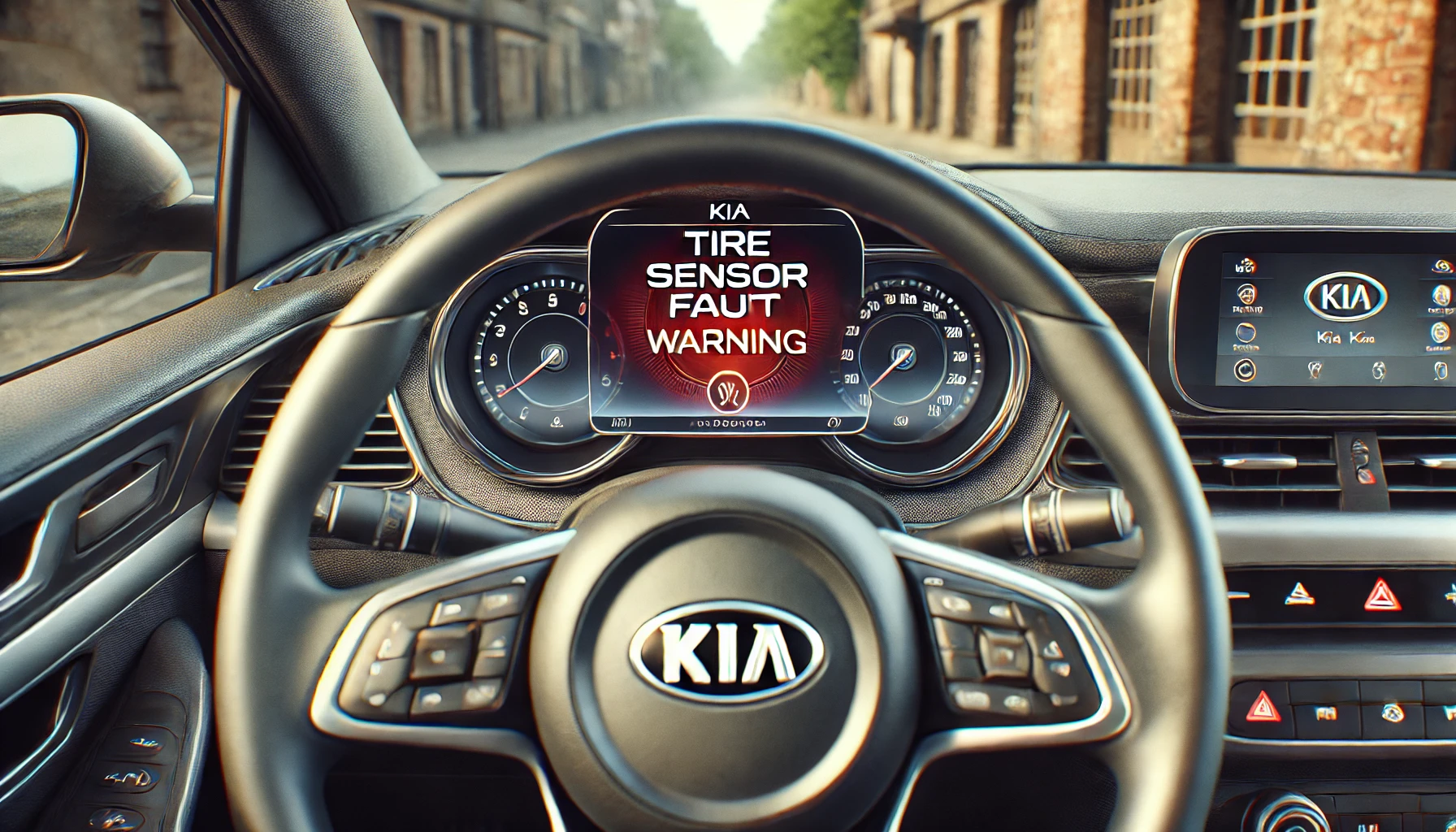
Kia vehicles, known for their reliable performance and advanced technology, are equipped with a Tire Pressure Monitoring System (TPMS) that helps drivers maintain optimal tire pressure. When the system detects an issue, a “Tire Sensor Fault” warning may appear on the dashboard. This can be caused by several factors, such as low tire pressure or a malfunctioning sensor. In this article, we’ll explore common causes of a Tire Sensor Fault in Kia vehicles and the steps you can take to resolve the issue.
Common Causes of Tire Sensor Fault in Kia Vehicles
Before diving into the fixes, it’s essential to understand why a Tire Sensor Fault may occur. Here are the typical causes:
- Low Tire Pressure: The most common cause of a tire sensor fault is low tire pressure. When one or more tires have air pressure below the recommended level, the TPMS system triggers a warning.
- Damaged or Faulty Sensors: Tire sensors can become damaged over time, especially during tire changes or if the vehicle has been driven on rough roads. A damaged sensor will fail to send accurate data, causing a fault warning.
- Weak Sensor Battery: The tire sensors in Kia vehicles are powered by batteries that usually last for several years. If the battery in one of the sensors is weak or dead, the system may trigger a Tire Sensor Fault.
- Radio Interference: Sometimes, external electronic interference can disrupt the communication between the sensors and the vehicle’s TPMS system, causing a fault message to appear.
- Recent Tire Service: If your Kia’s tires were recently changed or rotated, the sensors may not have been properly recalibrated, which can cause the system to malfunction.
Steps to Fix Tire Sensor Fault in Kia Vehicles
If you see a Tire Sensor Fault warning in your Kia, here are the steps to troubleshoot and fix the problem:
1. Check Tire Pressure
The first step is to manually check the tire pressure in all four tires. You can find the recommended tire pressure for your Kia in the owner’s manual or on a label inside the driver’s door. Use a tire pressure gauge to verify the pressure in each tire.
- If any tire is under-inflated, inflate it to the recommended level.
- After adjusting the tire pressure, drive the vehicle for a few miles to see if the TPMS system recalibrates and the fault clears.
2. Reset the TPMS System
If adjusting the tire pressure doesn’t resolve the issue, you may need to reset the TPMS system. Resetting the system is a common solution to clear any error messages. Here’s how to do it in most Kia vehicles:
- Turn the vehicle’s ignition to the On position without starting the engine.
- Use the controls on your steering wheel or dashboard to navigate to the TPMS settings.
- Select Reset TPMS or Relearn Tire Positions, and follow the on-screen prompts.
- Drive the vehicle at a steady speed for about 10-15 minutes to allow the system to recalibrate.
If successful, the Tire Sensor Fault message should disappear.
3. Inspect Tire Sensors for Damage
If the fault persists after resetting the system, it’s possible that one or more tire sensors are damaged. The tire sensors are located inside the tires, usually attached to the valve stem. Damage can occur during tire changes, rotations, or from rough driving conditions.
Visually inspect the valve stems for any visible damage. If a sensor is damaged, it will need to be replaced. This is best done by a professional at a Kia dealership or a certified mechanic.
4. Replace Sensor Battery
The sensors inside your Kia’s tires are powered by batteries, and over time, these batteries can weaken. If the battery in a sensor dies, the entire sensor will need to be replaced, as the batteries themselves are not replaceable.
Visit a Kia service center or a trusted mechanic to have the sensor replaced. Once the new sensor is installed, the system will need to be recalibrated to ensure it works properly.
5. Update the Vehicle’s Software
In some cases, a Tire Sensor Fault warning could be the result of a software glitch in your Kia’s onboard system. Kia occasionally releases software updates that address bugs and improve overall system performance.
Visit your local Kia dealership to check if a software update is available for your vehicle. If an update is required, it may resolve the issue with the TPMS.
Preventing Future Tire Sensor Faults
- Check Tire Pressure Regularly: Make it a habit to check your tire pressure at least once a month, especially during temperature changes, to ensure your tires are always properly inflated.
- Careful Tire Changes: When having your tires rotated or replaced, make sure the technician is careful with the TPMS sensors to avoid damaging them.
- Routine Maintenance: Include TPMS sensor inspections during your vehicle’s regular maintenance schedule to ensure they are in good condition and working properly.
- Stay Updated: Keep your vehicle’s software up to date to avoid any potential glitches or issues with the TPMS system.
Conclusion
While a Tire Sensor Fault in your Kia can be inconvenient, it’s often a minor issue that can be resolved with simple troubleshooting. Start by checking the tire pressure, resetting the TPMS, and inspecting the sensors. If the fault persists, visit a Kia-certified service center to have the sensors repaired or replaced. By maintaining your tire sensors and keeping tire pressure at the proper level, you can ensure your Kia continues to run smoothly and safely.
